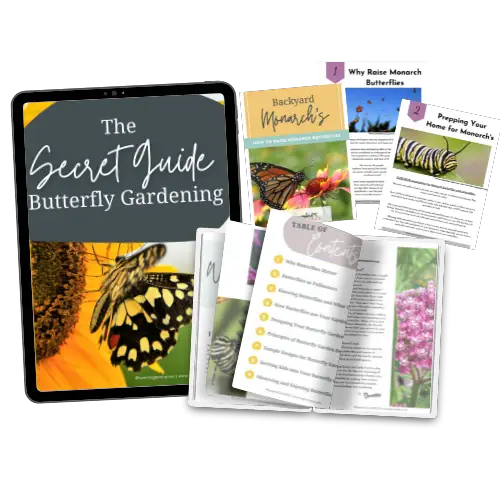How to Keep Milkweed From Spreading
Are you like me and love milkweed and all of the pollinators it brings to your garden especially the Monarch Butterfly but HATE how easily milkweed spreads? Unfortunately, there is no 100% guaranteed way to stop the spread of milkweed but you can slow it down. We use these techniques every year to help prevent the spread, here is how you can keep your milkweed from spreading.
Disclosure: Some of the links below are affiliate links, meaning, at no additional cost to you, I will earn a commission if you click through and make a purchase.
Perennial Butterfly weed is an integral plant to the survival of pollinators, especially monarch butterflies. But if you let certain varieties of milkweed do their own thing without managing the plants, in several seasons you’ll have an entire garden or meadow full of these native beauties. Depending on who you ask, this could be a good or bad thing – the pollinators sure love it, but some (though not all) milkweed can quickly choke other plants out.
Asclepias is also known as Milkweed. The Asclepias family includes Butterfly Weed, Common Milkweed, Swamp Milkweed, Whorled Milkweed, Prairie Milkweed, and more.
The good news is there are very simple steps to managing milkweed plants in the fall that will help control them from spreading. Bonus: you can plant the seeds on another part of your property, or give them to a lucky gardening friend.

How to Keep Your Milkweed From Spreading?
Milkweed seeds need to go through a cold stratification process in order to grow in the spring. This wintertime act of freezing, thawing, swelling and shrinking is necessary for these seeds to successfully crack open and germinate. This means that you still have time in the fall to control the spread of the seed.
Tying Up Seed Pods
If you’re looking to prevent the seed pods from opening up and dropping seeds in the fall, but aren’t ready to harvest, simply tie string or a rubber band around the center of the pods. The key to this is to get to them before they open up, which should be in mid to late October, depending on your region.
You can then leave the pods tied up until the early spring, which lets the cold weather naturally stratify the seeds on the stalks. In early spring you can harvest the pods as normal and either plant the seeds immediately or give the pods away to a friend.
Harvesting Seeds
If you have space in your refrigerator, or know someone who wants to plant the seeds immediately in the fall, you can harvest the milkweed seeds in mid to late October to prevent them from spreading. Again, you’ll want to do this once the temperatures have dropped but the seed pods haven’t quite opened up yet.
Simply cut the pods off the plants and bring them indoors. If some of the pods have already matured and are ready to open up, you’ll have the (slightly) challenging task of separating the seeds from the seed hairs, which are extremely fluffy and fly everywhere.
Tip- put the seed pods in a zip loc bag with a few nickels, close the bag and shake. This will help separate the seed from the seed hairs.

Get our
Secret Guide to Butterfly Gardening
Everything you need to start and maintain a vibrant and colorful butterfly garden.
Once you’ve opened up the pods and separated the seed into a bowl, you can give them away to plant in the fall (nature will naturally stratify the seed) or you can stratify them yourself in the refrigerator. Simply dampen paper towels and spread the seeds in a single layer on the paper towels. You can repeat the process as many times as necessary, layering the paper towels on top of one another.
Once you’ve finished, place the damp paper towels and seeds in a Ziploc bag and label them with the date harvested and variety. Give this bag to a friend to cold stratify herself or place it in a safe spot in your refrigerator for 30 days and then start in peat pots indoors.
Learn more about Growing Milkweed by visiting- How to Grow Milkweed Seeds

Keep A Close Eye On Your Milkweed Plants
It’s really important to keep a close eye on your milkweed garden if you’re trying to prevent it from spreading; once the pods start to harden and you’ve had a frost, get out in the garden and either cut the pods off or tie them up. If you do this every fall, you’ll prevent milkweed from taking over your garden and your friends or family will have plenty of seeds to add to their gardens.
You may also enjoy these related articles:
- Plants for Butterfly Gardens: Attract More Butterflies to Your Yard with These Beautiful Flowers
- Butterfly Weed vs Milkweed and Why You Need BOTH
- Planting Common Milkweed for Optimal Germination
Did you enjoy this article? Want to hear more? Stay in touch! Sign up below to receive weekly tips and inspiration for your homestead.

